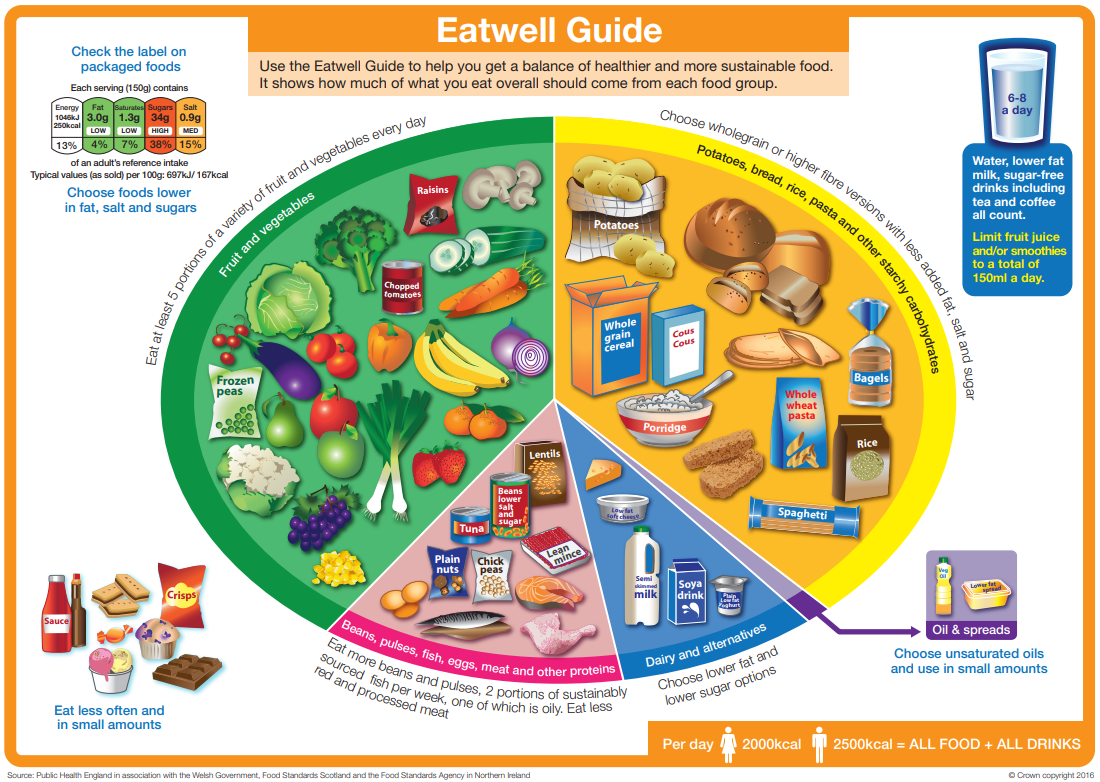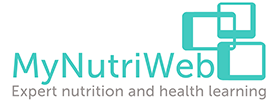
By Cordelia Woodward, MyNutriWeb Registered Dietitian
Is it time for the UK Eatwell Guide to have a shake up? We explored this very question during the special edition roundtable event we held last year with a panel of experts (read more about the event in this blog). The presentations focused on current adherence to the Eatwell Guide, what materials are available to support healthy eating recommendations and an exploration into food based dietary guidelines (FBDG) available globally. Quantitative research findings were discussed, including views from healthcare professionals about the use of the Eatwell Guide and this month, we’re pleased to see that this insightful research has now been published.
The paper has been published in the journal ‘sustainability’ , with open access, authored by Amy E Culliford, Jane Bradbury and Elphee B. Medici.

What’s the importance of the review?
In the UK, FBDG are reflected by the Eatwell Guide, developed by Public Health England (PHE), which was last updated in 2016. The Eatwell Guide replaced the Eatwell Plate and continues to define the government’s advice on a healthy balanced diet. The guide provides a visual representation of healthy eating by splitting the food we eat into five food groups and shows how much an individual should eat from each group.
Currently, on the government website, supporting guides include:
Government dietary recommendations (12 page document covering recommendations for energy and nutrients for males and females aged 1-18 and 19+ years)
A quick guide to the government’s healthy eating recommendations


Current adherence to the recommendations set out by the Eatwell Guide remain poor, with only 0.1% of the UK population meeting all nine recommendations provided by the Eatwell Guide. Improving adherence is of upmost importance not only to improve the health and reduce rates of non-communicable disease in the UK but also to support reduction in the environmental impact of what we are eating, to support meeting the UK’s targets in reducing greenhouse gas emissions (GHGe) by 68% by 2023, compared to 1990 levels.
Does the Eatwell Guide represent a sustainable diet?
Research has found that individuals with a moderate to high adherence to the Eatwell Guide recommendations have a 30% lower dietary carbon footprint and a 7% reduced total mortality risk, compared with those with very low adherence. Why are we seeing such poor adherence to the Eatwell Guide? We know that adherence to Eatwell Guidelines are impacted by multiple factors, including; income and cost, availability, advertising, the wider food environment, skills, education, access, cultural norms and beliefs to name but a few. However in this paper the authors investigate whether communications around the guide are fit for practice. This new rapid review explores this by investigating the scientific literature available relating to the communication and implementation of FBDG. This also included examples of strategies used globally highlighting what lessons that can be learnt from other countries’ success.
Indeed, adaptations have been made of the UK Eatwell Guide including the Vegan Eatwell Guide, Plant-Based Eatwell Guide, South Asian Eatwell Guide and the African and Caribbean Eatwell Guide. Thus highlighting the need for culturally, socially and ethically adapted versions, where current guidelines are not meeting the need.
‘If health messages are conveyed in a culturally appropriate way, it will lead to acceptability and adherence. Culturally intelligent guidance is needed to get the message across on how to have a healthy well-balanced diet.’ – Fareeha Jay, Registered Dietitian
The findings of the review

This research summarises the current scientific literature (captured from data published between 2012 and 2022) relating to effective communications of FBDG which, importantly, can be utilised in order to improve future communications for healthy eating guidelines, including the Eatwell Guide.
Key themes were pulled out as part of the review as being significant in effective communication of FBDG. The following five key recommendations were made, with the aim of helping to improve adherence to the Eatwell Guide:
(1) Review of language and tone of nutrition and sustainability related messages
Short, simple, specific and easy to understand communications should be utilised, using an empathetic and empowering tone. Specific messages relating to sustainable diets should be recommended and incorporated into guidelines offering benefits for the people and the planet.
(2) Targeting of FBDG and communications to specific population segments
Communication needs to be tailored and appeal to different population groups including age, gender, cultural background and motivation style. Further research is warranted to explore factors which influence food choices within specific target population segments.
(3) Addressing barriers to and benefits of adopting the Eatwell Guide recommendations
Barriers need to be addressed to guide in effective communications. Barriers identified included taste preferences, cost, time and habits.
(4) Development of practical tools and resources to support implementation of the guidelines
Compared to other countries’ FBDG communication strategies, the UK is currently lacking in producing supporting resources to assist in the implementation of the Eatwell Guide. For example, portion size guidance for various population groups, healthier and tasty substitutions for unhealthy and/or unsustainable foods would be beneficial and also recipes and practical approaches to meeting FBDG.
(5) Leveraging social media and social marketing techniques to increase public engagement
Social media and the internet are a key target area to communicate to individuals. The digital space should be utilised to form a key part of the Eatwell Guide communication strategy, alongside traditional media.
As can be seen, multiple elements need to be considered when communicating the Eatwell Guide to the public, health professionals and other stakeholders.
So what now?
The review provides such valuable insights into the effective use of FBDG, including what has been working well globally. Research findings from this new rapid review can help to drive better and more effective communication strategies in order to promote sustainable healthy eating guidelines. Policy makers, the food industry and health professionals should use this to drive dietary behaviour change. The authors concludev that further research is needed in this area, with a particular focus on ‘research into the motivations, perceived barriers and preferred communication style for target population groups and a more detailed analysis of social marketing and industry strategies which could be adapted to promote sustainable healthy diets.’
“Healthy eating guidance including the Eatwell Guide need to be brought to life through a strategic and creative marketing strategy designed to resonate with different population groups and on a level similar to how food marketing is successfully done. Government needs to go beyond current guidelines and campaigns and embed this into an always-on public health strategy to make this happen. Those involved in such a strategy would benefit from the learnings in this paper” – Tanya Haffner, Registered Dietitian, CEO MyNutriWeb
Related resources
MyNutriweb webinar – Eatwell Guide – Time for a Shake Up (2022)
African & Caribbean Eatwell Guide
Let us know your thoughts on the new paper and learnings below.







it doesnt allow you to view the south asian link plus for the above article what about practical things we can use in presentations more hands on? portion sizes which is not clear on the plate will this ever be looked into again?
Hi, can you see if the South Asian link works now? I have contacted the author for comments on your portion sizes question. Many thanks.
Thank you for your comment. We have highlighted the lack of portion size guidance and practical tools within the article and in our recommendations for improving the Eatwell Guide communications strategy. I hope the links are now working so that you can access the full publication. We agree that this is very important and needs to be addressed!
What is the costing for adhearance to this diet; was that explored
Thank you for your question. This was not within the scope of this research project but has been explored by another team of researchers in 2016. You can read their work here: https://bmjopen.bmj.com/content/6/12/e013182
Hello
I was looking at the guidelines for protein intake for the 65 and 75 years plus as I am 68 and retired from clinical dietetics.
These are based on the 1991 data.
There has been quiet a lot of research carried out recommending higher intakes of protein for those aged 65 and over. I would be most interested in your comments.
Thanking you
Hi Ann. Many thanks for your comment. This research project did not cover protein requirements and the research around this. We hope to provide the community with an update around research on protein across the age groups in the future. Best wishes, MyNutriWeb